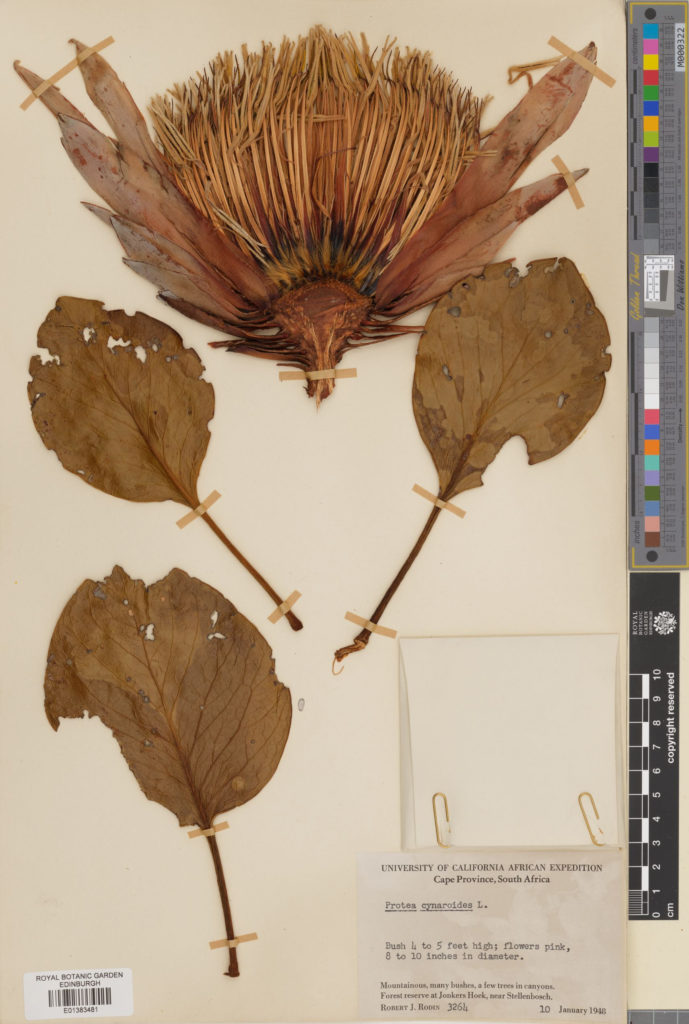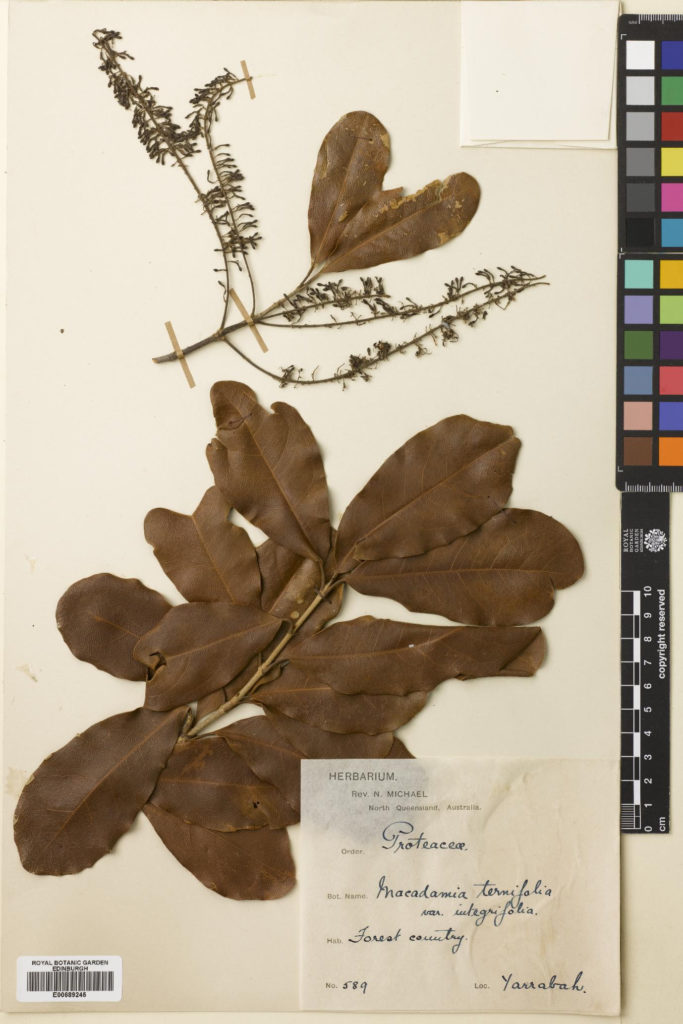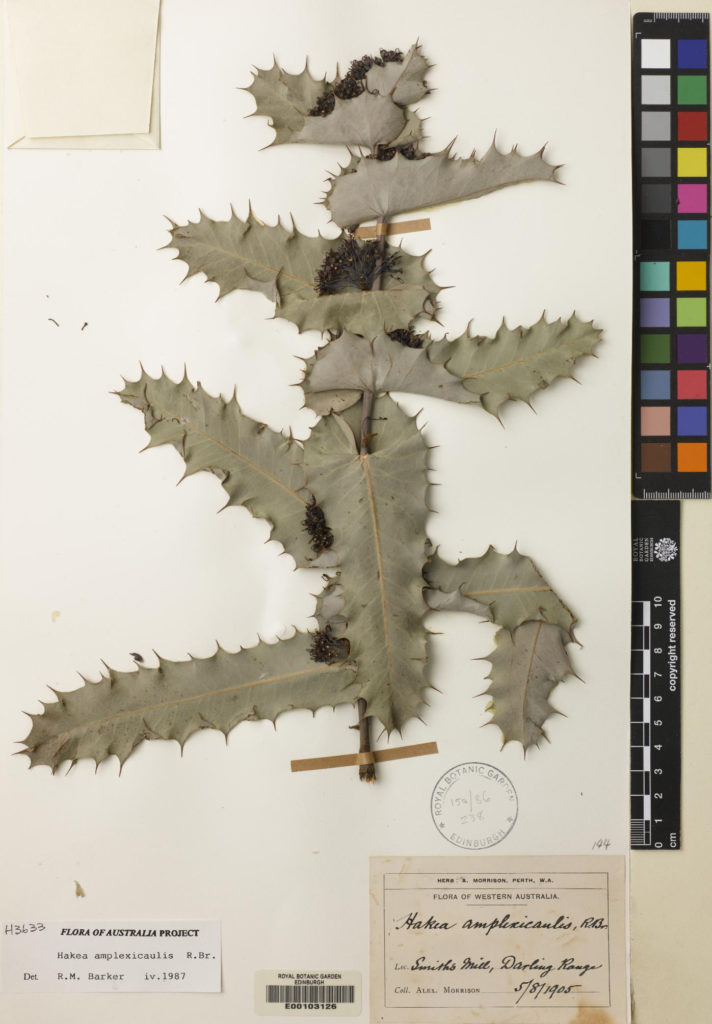The following blog was written by Iain Ratter a digitiser in the Herbarium.
Since 2021 we have increased our digitisation capacity with the goal of getting to 1 million specimens imaged by Autumn 2024. Each digitiser is assigned a family of plants to work through. This series of blogs will spotlight the families that have been completed by a member of the team.
The Proteaceae are a very old family of angiosperms that are notable for their exceptional morphological diversity. They take their name from the Greek god Proteus who is known for assuming many forms, particularly apt for the Proteaceae. Sometimes their leaves are simple, sometimes alternate or spiral. Their venation can be parallel or palmate. Their flowers can be monoecious, dioecious, andromonoecious or hermaphroditic and their fruit can be everything from drupes to achenes. They can be small shrubs to tall trees and their roots are sometimes proteoid, sometimes not. What does bind them together is their compound inflorescences which are often magnificent in size and shape.

Circling back to proteoid roots, they take their name from this family. These specialised roots contain clusters of lateral rootlets that form a dense mat beneath the soil and leaf litter. These roots can then chemically alter the soil environment to increase nutrient solubility. This is one of several adaptations to the dry soils these plants usually grow in.
The proteaceae have a classic Gondwanan distribution being found in Australia, southern Africa, India and Madagascar. In more recent times they have been introduced to Europe and the Americas due to their unique appearance and spectacular flowers. Furthermore, many members of the family provide useful wood, pharmaceuticals and nuts. Macadamia nuts for instance are produced, funnily enough, by the Macadamia genus and in 2022 total trade of such nuts amounted to $865M.

Our Collections
Before mass digitisation we had 3,989 specimens imaged, following the project we have 5,335 specimens. Of these 373 specimens are types. Click here to see all of our Proteaceae specimens.
Top 5 Genera
| No. of Specimens | Genus |
| 919 | Grevillea |
| 675 | Hakea |
| 347 | Helicia |
| 340 | Banksia |
| 264 | Dryandra |
Top 5 regions
| No. of Specimens | Herbarium Filing Region |
| 3,329 | Australia |
| 755 | Southern Africa |
| 293 | Cultivated |
| 135 | Temperate South America |
| 116 | New Guinea |

